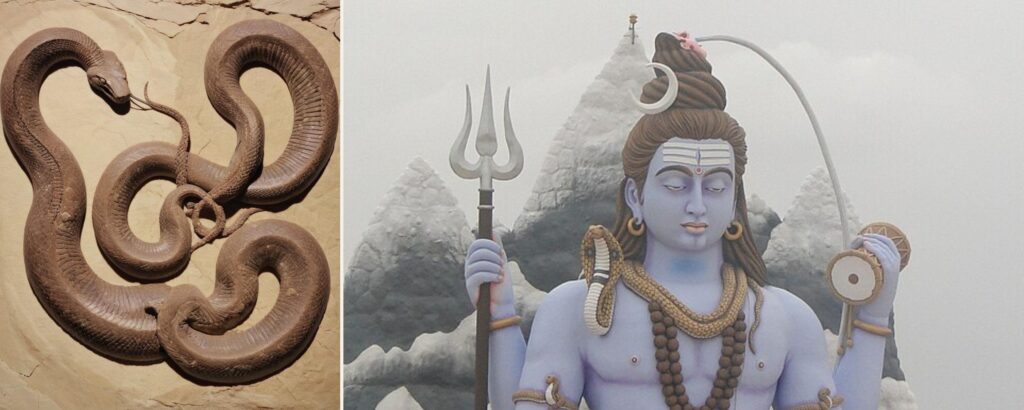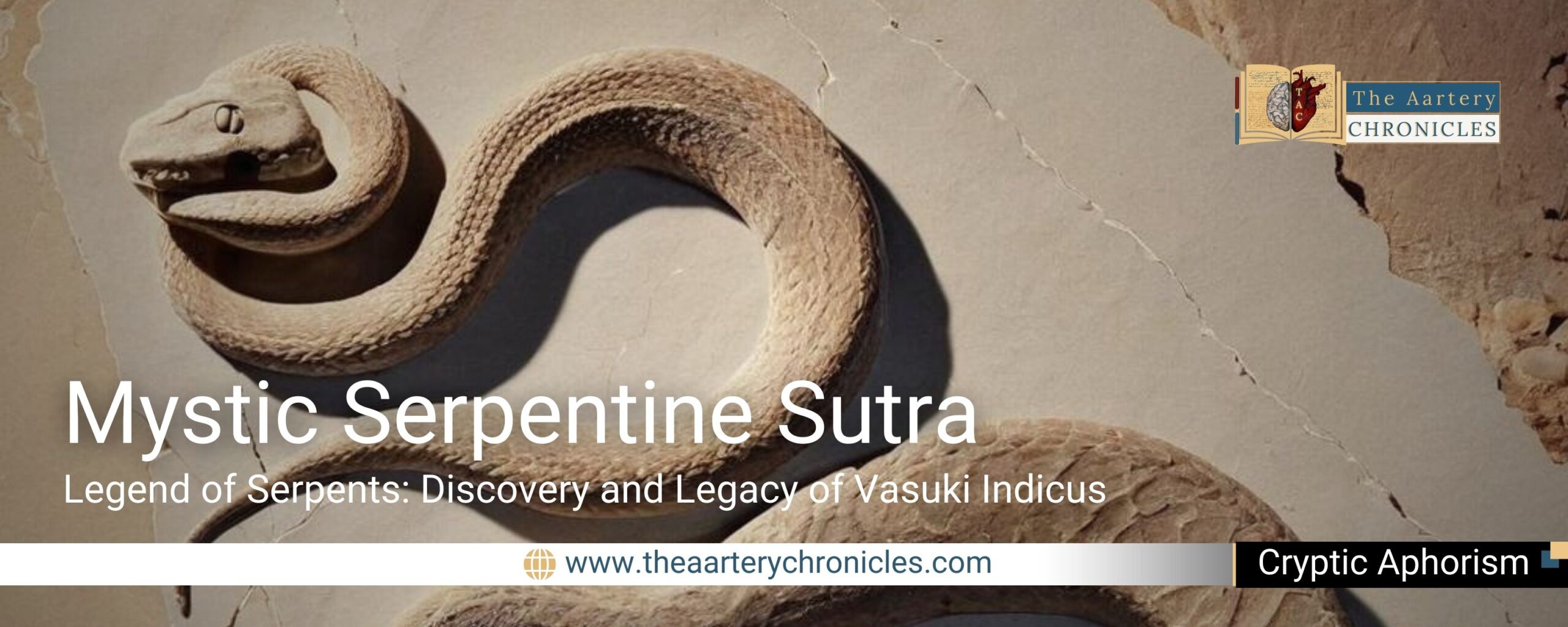The Legend of Serpents: Discovery & Legacy of Vasuki Indicus in Indian Paleontology
Overview
‘Naga’ in Sanskrit, the sacred language refers to a ‘snake’ or a serpent. Nagas or snakes hold immense importance in the Indian scriptures. These mostly feared and revered organisms represent spiritual significance and embody profound symbolism.
From ancient marvelous temples depicting hooded cobras to Hindu scriptures and literature portraying serpent deities, snakes are a matter of devotion and worship, and a symbol of religious significance that captures the imagination of the Indian psyche.
Amidst the cultural backdrop, one of the recent scientific discoveries unravels a fascinating tale of snakes. A fossil was discovered in Gujarat that revealed the existence of an ancient snake species that once traversed the earth.
The discovery of the fossil
Professor Sunil Bajpai from the Indian Institute of Technology Roorkee (IIT Roorkee) with post-doctoral fellow Debajit Dutta led the team of researchers who discovered one of the largest snakes that probably has ever existed.
The fossils were discovered in the year 2005 in Kutch Gujarat, near the Panandhro Lignite mine. 27 almost well-preserved pieces of the snake’s vertebral column were found. The scientists had initially thought that the fossils belonged to an ancient creature resembling a crocodile, however upon thorough examination, it was revealed that the fossils were of a remarkable snake.
The fossil specimens and Madstoiidae: the extinct clade
The remains comprised 27 well-preserved vertebrae. According to the size of the vertebrae, the snake is believed to be measured approximately 36-50 feet in length which would rival the length of ancient species Titanoboa.
According to the study, the fossils belong to the extinct genus of the Madtsoiid from the Middle Eocene Naredi Formation of India. The behemoth is believed to have lived at least 47 million years ago in the marshy evergreen woods in the Indian Western Ghats.

The species had thrived in the epoch characterized by the climate warmth, with temperatures exceeding 28°C. The morphology of the vertebrae indicates a terrestrial and semi-aquatic habitat. Along with the snake’s fossils, other fossils of animals including turtles, crocodiles, and catfish, suggest that the snake was a part of the diverse ecosystem in ancient India.
The biogeographic aspects and inter-relationship with the rest of Indian and North African madstoiids indicate that the species of the fossil snake reflects a relic lineage that originated in India. Madstoiidae is an extinct clade of mainly Gaondwanan terrestrial snakes. The species during the Late Cretaceous geographically ranged in the regions around South America, the European archipelago, Africa, and India.
Vasuki Indicus
Because of its Indian Origin and to pay homage to the Puranic Snake Vasuki around the neck of Lord Shiva, the researchers choose the name Vasuki Indicus. And ‘indicus’ to represent India, the country of origin. The chosen name showcases the cultural significance of Snakes in Hinduism and the importance of Indian fossil discovery.
Compared to the present day, the snake’s habitat was situated in a globally warmer climate in the marshy back swamp near the coast, resembling the habitat of modern pythonids. Research estimations indicate that Vasuki was not only the largest madtsoiid but also one of the largest snakes that have ever been reported. The scientific report suggests Vasuki being a slow-moving snake would subdue its prey by constriction.

Who is Shiva’s Vasuki?
According to the Hindu cultural scriptures, Vasuki is depicted as a King of serpents or Nagas. Vasuki is worshipped by people on the occasions of Naga Panchami and Naga Pujas. The snake being present around Shiva’s neck reflects his role as the ‘Pashupati’ the lord of all creatures.
Some artworks represent Vasuki with multiple heads. There are numerous other stories revolving around Vasuki in the scriptures. One such incidence is, during the episode of Samudra Manthan, or the churning of the milk ocean, the deadly poison, the halahala was drunk by some snakes along with Lord Shiva. Following this remarkable event, lord Shiva deeply impressed graciously accepted Vasuki around his neck.
Shiva being adorned with Vasuki wrapped around his neck signifies a sign of control over dangerous and destructive forces of life and existence. It also reflects Lord Shiva’s transcendence beyond the realms of death and time portraying his supreme control and eternal independence. Snakes are a matter of immense devotion in Indian culture, in a yogic belief system it is often associated with Kundalini energy lying coiled at the spinal base and ascending through the chakras to achieve ultimate enlightenment.

Sanika Pande
- Medicine and Diseases
- Nutrition and Diet


















